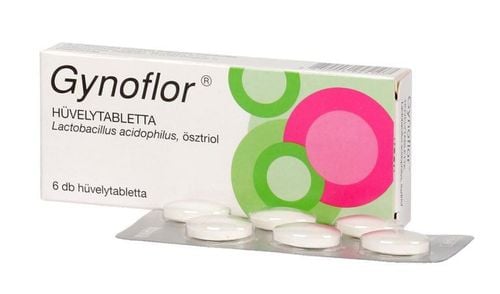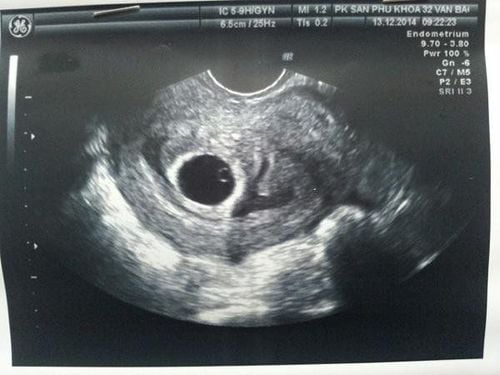During pregnancy, some women may mistake amniotic fluid leakage for vaginal discharge. It is very important to distinguish between these two things. Pregnant women need to know this to take better care of themselves, have a healthy pregnancy, and support the healthy growth of the fetus.
1. What is amniotic fluid?
To distinguish between amniotic fluid and vaginal discharge, it is essential to first understand what they are.
Amniotic fluid is a nutrient-rich liquid made by the placenta, amniotic membrane, and mother's blood system during the first three months of pregnancy. This clear liquid surrounds the baby in the amniotic sac, giving a safe and supportive place. The amniotic membrane stops the entrance of harmful germs from outside. Most of the amniotic fluid will act in helping to enhance and continue the growth of the baby's internal organs, particularly their lungs and kidneys.
Trắc nghiệm: Bạn có hiểu đúng về dấu hiệu mang thai sớm?
Các dấu hiệu mang thai sớm không phải chỉ mỗi trễ kinh mà còn có rất nhiều dấu hiệu khác như xuất huyết âm đạo, ngực căng tức,… Điểm xem bạn biết được bao nhiêu dấu hiệu mang thai sớm thông qua bài trắc nghiệm này nhé!
During the first three months of pregnancy, the fetus swallows amniotic fluid. When the fluid enters the body of the fetus, the kidneys purify it and make it leave as urine. The fetus also secretes a small amount of fluid from the lungs. The excess fluid is then absorbed by the amniotic membrane or the umbilical cord, helping to maintain the ideal fluid balance necessary for its growth.

2. What is Vaginal Discharge?
Vaginal discharge is the fluid that comes from a woman's vagina after puberty. Normal vaginal discharge generally has a small amount, feels sticky, and can be clear or cloudy, like lake water. It does not have any smell and helps in cleaning and keeping the vagina moist and protecting it from infection.
Vaginal discharge increases before ovulation or menstruation. Increased discharge during these times is the normal reaction of the body.
If the discharge turns out to be excessive, yellow or green, with an odor, and does not stop, this could indicate a problem such as a yeast infection, cervical ectropion, or even cancer of the cervix. Sometimes this can occur even during pregnancy, which might confuse pregnant women in identifying the fluid between vaginal discharge and amniotic fluid.
3. How does one tell the difference between amniotic fluid and discharge?
When you are pregnant, you may notice leakage. As your bladder fills up more quickly, you might leak some urine. Also, in the last months of pregnancy, the vagina will release more fluid to help with an easier birth. Because of this, many pregnant women find it hard to tell if the discharge from the vagina is vaginal fluid or amniotic fluid.

Some signs to tell if amniotic fluid is leaking:
- The discharge is clear, white, or might have mucus or blood.
- Amniotic fluid does not smell.
- When amniotic fluid leaks, it can soak your underwear.
Vaginal discharge has these different signs:
- Vaginal discharge is usually milky white, yellow, or green.
- It might smell fishy.
- Vaginal discharge can also make your underwear wet.
On noticing a discharge from the vagina during pregnancy, one is not so sure that this is the amniotic fluid, which is leaking-it just might be vaginal fluid. If unsure or worried, go to a medical facility or hospital with an obstetrics and gynecology department for advice. Please feel free
4. Risks of Amniotic Fluid Rupture and Vaginal Discharge During Pregnancy
The other major concern is either amniotic fluid leakage or vaginal discharge throughout pregnancy due to associated risks which may be dangerous with regard to the health and development of the baby.
4.1. Potential Risks of Amniotic Fluid Leakage
Whatever the gestation age, the leaking amniotic fluid may become risky both for the mother and the infant. It is still manageable if the leaked amniotic fluid is little. But when lots of it are leaked, then it becomes dangerous for the baby.

Amniotic fluid leakage at first and second trimester pregnancy can result in the following serious problems:
- Miscarriage
- Preterm birth
- Birth defects
- Stillbirth
In the last three months of pregnancy, if the remaining amniotic fluid is too low, it may cause the following risks:
- Difficult delivery
- Greater risk of cesarean section
- Growth retardation
Leaking amniotic fluid with unusual characteristics can signal the following danger signs that pregnant women need to be aware of:
- Red-brown leakage: This can mean that the fetus is in danger inside the womb, and you need immediate emergency care. Cloudy green, foul-smelling leakage: This may be a sign of amniotic fluid infection, which puts the fetus at risk of infection. Pregnant women should get medical help right away.
- Dark yellow leakage: It might indicate that the fetus has chronic heart failure; thus, seeing a doctor soon would help the patient avoid serious problems during labour.
- Moss green leakage: It indicates fetal distress; hence, you are recommended to go to a doctor for monitoring as this problem can occur again.
- Yellow leakage: This may indicate poor growth of the fetus or low iron in the pregnant woman's body.
- Light brown or pink leakage: This indicates that labor has begun, and pregnant women need to immediately go to a hospital with obstetrics because the waters may break at any time.
Leaking amniotic fluid with unusual characteristics can warn of the following danger signs that pregnant women need to be aware of:
Amniotic fluid leaking is red-brown: this can be a sign that the fetus is in danger danger inside the womb, pregnant women need immediate emergency care. Amniotic fluid leaking is cloudy green, bad smell: pregnant women need to go to a medical facility immediately for examination and treatment. Because this can be a sign of amniotic fluid infection, the fetus is at risk of infection in this case. Amniotic fluid leaking is dark yellow: this is a warning sign that pregnant women are suffering from chronic heart failure, so it is necessary to see a doctor soon to prevent acute fetal failure during labor. Amniotic fluid leak is moss green: this is a sign that the pregnant mother has had fetal failure. Therefore, pregnant women should go to the doctor to be monitored by specialists, because this condition may repeat. Leaking amniotic fluid is yellow: this is a sign that the fetus is growing slowly or the mother is anemic during pregnancy. Amniotic fluid leaking is light brown or pink: this is one of the signs of labor, pregnant women need to be taken to a medical facility with an obstetrics department immediately because amniotic fluid can break at any time.

4.2. Vaginal Discharge During Pregnancy
The common and sticky, like mucus, vaginal discharge is very normal for a pregnant woman due to the hormonal changes. Typically, vaginal discharge is normal and not a cause for alarm. However, if discharge has changed color, developed a strange smell, or is causing itching and irritation in the private area, this could be a possible indication of an infection.
- Yeast vaginitis: This is not a life-threatening condition; however, pregnant women need to go for a check-up for safety for themselves and their baby.
- Bacterial vaginosis: This might be life-threatening to the baby because the infection may spread into the uterus, which may cause early breaking of water and delivery.
In the case of any unusual signs or discharge from the vagina, whether it is amniotic fluid or vaginal discharge, pregnant women should see a doctor for an examination and get specific advice to keep both mother and baby safe.
To arrange an appointment, please call HOTLINE or make your reservation directly HERE. You may also download the MyVinmec app to schedule appointments faster and manage your reservations more conveniently.













